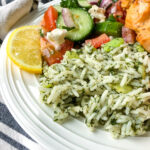High cholesterol is primarily driven by dietary choices, specifically the foods we consume daily. Cholesterol itself is a waxy substance made by your liver and present in your blood, essential for various bodily functions. However, when there’s too much cholesterol, particularly the “bad” kind, it poses significant health risks. Adopting a heart-healthy eating pattern is crucial for maintaining healthy cholesterol levels by naturally limiting unhealthy fats and increasing beneficial ones.
There are two primary types of cholesterol that are important to understand for heart health.
Types of Cholesterol
Understanding the types of cholesterol is key to managing your heart health. The two main types are:
- Low-density lipoprotein (LDL): Often termed “bad” cholesterol, LDL contributes to plaque buildup in your arteries. This plaque, composed of fatty deposits, narrows and hardens arteries, significantly increasing the risk of coronary heart disease. High LDL levels are a major concern for cardiovascular health.
- High-density lipoprotein (HDL): Known as “good” cholesterol, HDL plays a protective role against heart disease. HDL cholesterol helps transport LDL cholesterol away from the arteries and back to the liver for processing, effectively reducing the risk of plaque formation and promoting cardiovascular wellness.
While many people with high cholesterol feel no immediate symptoms, regular check-ups are vital for early detection and management.
What Foods Cause High Cholesterol? Dietary Culprits
Diet plays a pivotal role in influencing your cholesterol levels. Certain food choices are directly linked to raising bad cholesterol (LDL) and negatively impacting your heart health. Understanding these dietary culprits is the first step towards making heart-healthy changes.
-
Foods High in Unhealthy Fats (Saturated and Trans Fats): These are the biggest dietary contributors to high cholesterol.
- Saturated Fats: Found abundantly in fatty meats, deli meats, butter, cream, ice cream, coconut oil, and palm oil. These fats directly raise LDL cholesterol levels.
- Trans Fats: Often hidden in deep-fried takeaway foods and commercially baked goods like pies, biscuits, buns, and pastries. Trans fats are particularly harmful, as they not only increase LDL cholesterol but also lower beneficial HDL cholesterol.
-
Low Intake of Foods with Healthy Fats: Healthy fats are essential for raising “good” HDL cholesterol, which helps protect your heart. A diet lacking these fats can negatively impact your cholesterol profile.
- Healthy Fat Sources: Include avocado, nuts, seeds, olives, plant-based cooking oils (olive, canola, sunflower oil), and fatty fish. Incorporating these into your diet can help improve your HDL cholesterol levels.
-
Low Intake of Dietary Fiber: Fiber, particularly soluble fiber, is crucial for lowering LDL cholesterol. It binds with cholesterol in the digestive system, preventing its absorption into the bloodstream.
- Fiber-Rich Foods: Vegetables, fruits, wholegrains, legumes, nuts, and seeds are excellent sources of dietary fiber. A diet rich in these foods supports healthy cholesterol levels.
Beyond the types of fats and fiber, other dietary habits can also influence your cholesterol.
Other Dietary Factors Influencing Cholesterol
-
Portion Sizes: Overeating, regardless of food type, can lead to weight gain and subsequently higher cholesterol levels. Excess calories are converted into triglycerides, another type of fat in the blood, which can also contribute to heart disease risk. Being mindful of portion control is important for overall health and cholesterol management.
-
Alcohol Consumption: Excessive alcohol intake can raise both cholesterol and triglyceride levels. While moderate alcohol consumption may have some debated benefits, heavy drinking is detrimental to your cholesterol profile and overall health.
While diet is the primary driver, other lifestyle and genetic factors also play a role in cholesterol levels.
Beyond Food: Other Causes of High Cholesterol
While food is the major factor, other elements contribute to high cholesterol:
- Lack of Physical Activity: Sedentary lifestyles contribute to higher LDL cholesterol and lower HDL cholesterol. Regular exercise is crucial for improving your cholesterol profile.
- Overweight and Obesity: Excess body weight, especially around the abdomen, is linked to higher LDL cholesterol, lower HDL cholesterol, and higher triglycerides.
- Smoking: Smoking damages blood vessels, making them more prone to plaque buildup and increasing LDL cholesterol levels while lowering HDL cholesterol.
- Genetics: Family history plays a significant role. Genetic conditions like familial hypercholesterolemia can cause very high cholesterol levels regardless of diet.
- Medical Conditions: Certain conditions like kidney disease, liver disease, hypothyroidism, type 2 diabetes, and high blood pressure can elevate cholesterol levels.
- Medications: Some medications taken for other health issues can have the side effect of increasing cholesterol levels.
Adopting a heart-healthy eating pattern is a powerful way to manage your cholesterol naturally.
Heart-Healthy Eating for Lower Cholesterol
A heart-healthy eating pattern emphasizes a wide variety of fresh, unprocessed foods while significantly limiting highly processed items. This approach is naturally lower in unhealthy fats and higher in fiber and beneficial nutrients, promoting healthy cholesterol levels and overall well-being.
This dietary approach includes:
- Plant-Based Focus: Prioritize vegetables, fruits, legumes, and wholegrains.
- Healthy Fats: Choose sources like avocado, nuts, seeds, and olive oil.
- Lean Proteins: Opt for fish, poultry without skin, and lean meats in moderation.
- Limit Unhealthy Fats: Reduce saturated and trans fats found in fatty meats, processed foods, and fried items.
- High Fiber: Include plenty of fiber-rich foods like oats, beans, fruits, and vegetables.
- Portion Control: Be mindful of serving sizes to avoid overeating.
Incorporating these healthy eating tips into your daily routine can make a significant difference in managing your cholesterol and protecting your heart health.
Healthy Eating Tips to Manage Cholesterol
-
Embrace Plant-Based Foods: Make vegetables, legumes, fruits, wholegrains, nuts, and seeds the foundation of your diet.
- Include legumes in at least two meals weekly.
- Snack on hummus and vegetable sticks.
- Use tofu or lentils instead of meat in stir-fries.
-
Choose Whole Grains: Opt for wholegrain breads, cereals, pasta, rice, and noodles over refined grains.
-
Snack Smart: Choose plain, unsalted nuts and fresh fruit for snacks. Aim for two servings of fruit daily.
-
Healthy Fat Swaps: Use avocado, nut butters, and spreads made from healthy unsaturated fats instead of butter, coconut oil, and cream.
-
Healthy Cooking Oils: Cook with canola, sunflower, soybean, olive, sesame, or peanut oils. Extra virgin olive oil is an excellent choice.
-
Fish Twice Weekly: Aim to eat fish two to three times a week, choosing fatty fish like salmon, tuna, and sardines.
-
Eggs in Moderation: Most people don’t need to severely limit eggs, but those with high cholesterol, type 2 diabetes, or heart disease should limit intake to seven eggs per week.
-
Lean Meat Choices: Select lean meat, trim fat, and limit unprocessed red meat.
-
Low-Fat Dairy: Choose unflavored, low-fat milk, yogurt, and cheese. Opt for non-dairy alternatives with no added sugar and added calcium.
-
Limit Processed Meats: Minimize or avoid sausages and deli meats.
By making these dietary adjustments and embracing a heart-healthy lifestyle, you can effectively manage your cholesterol levels and significantly reduce your risk of heart disease. Consulting a healthcare professional or registered dietitian can provide personalized guidance and support for your cholesterol management journey.



